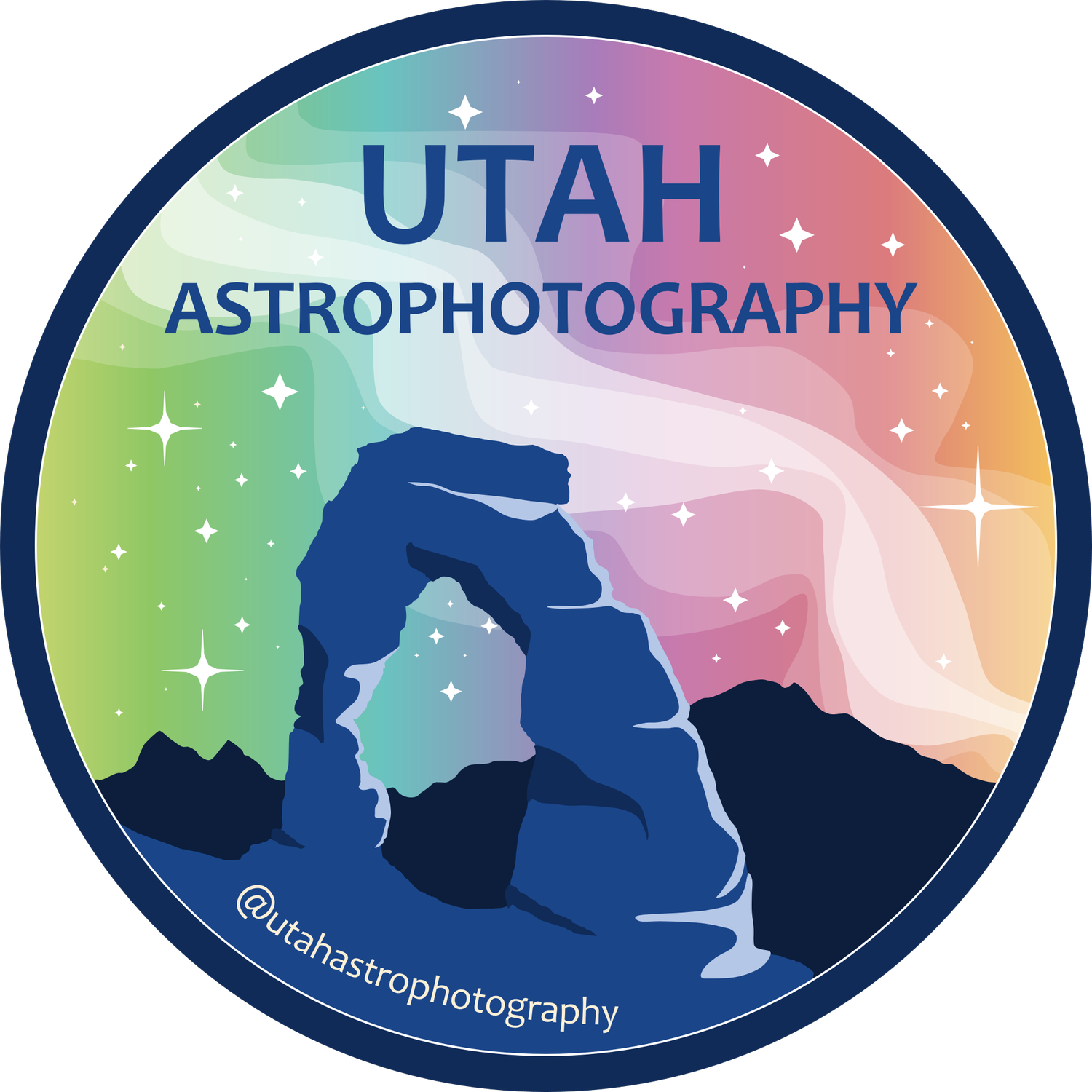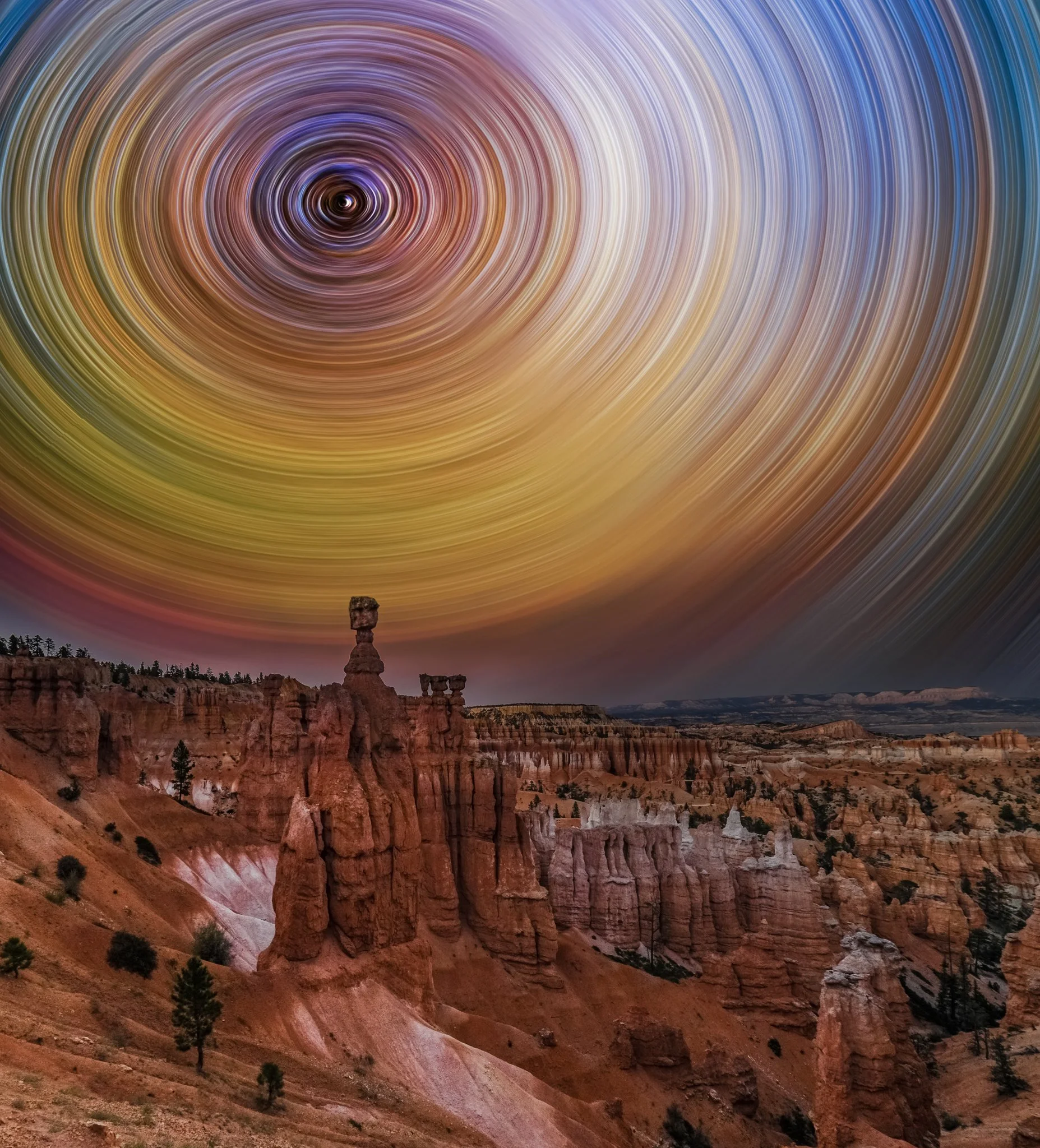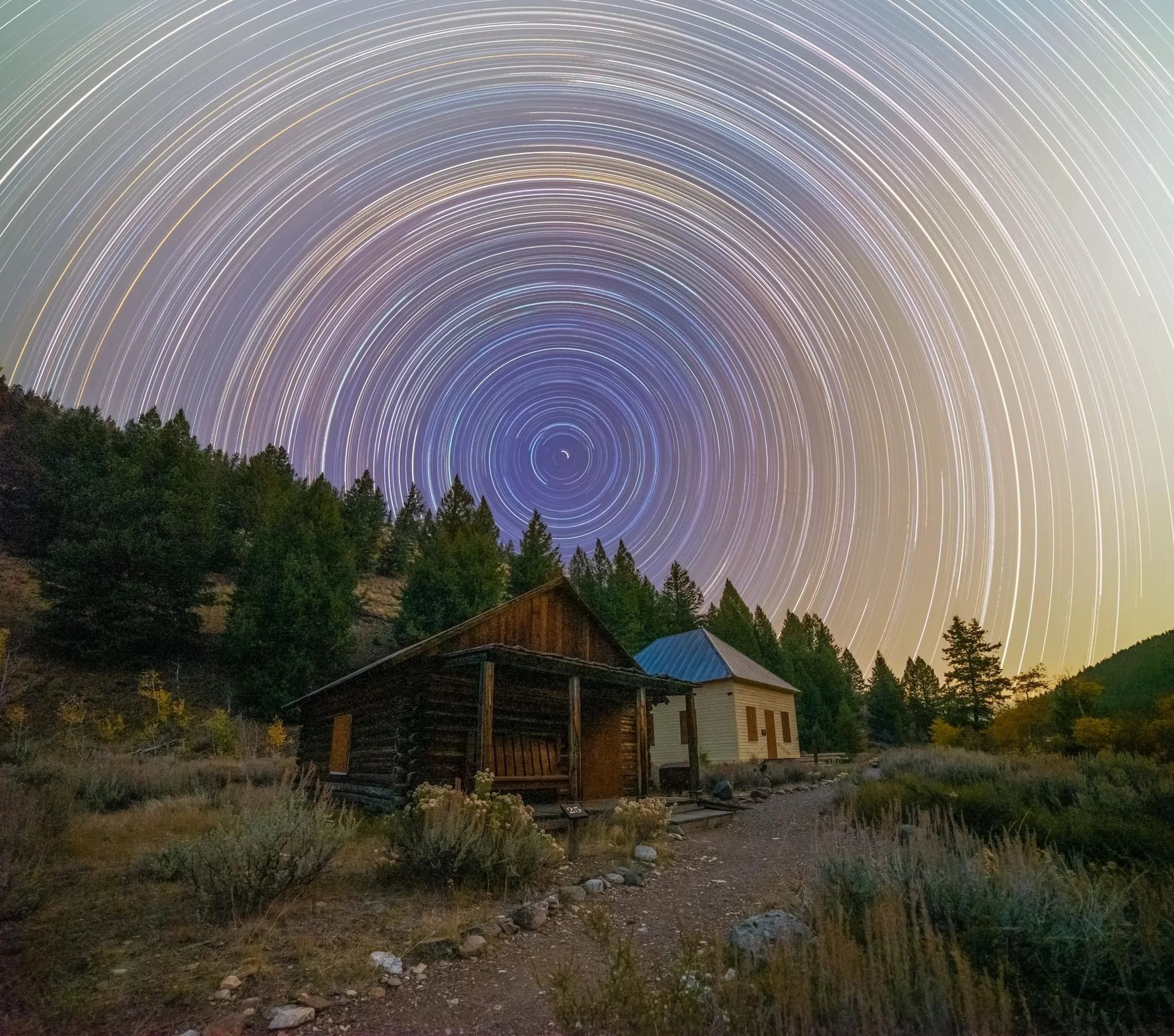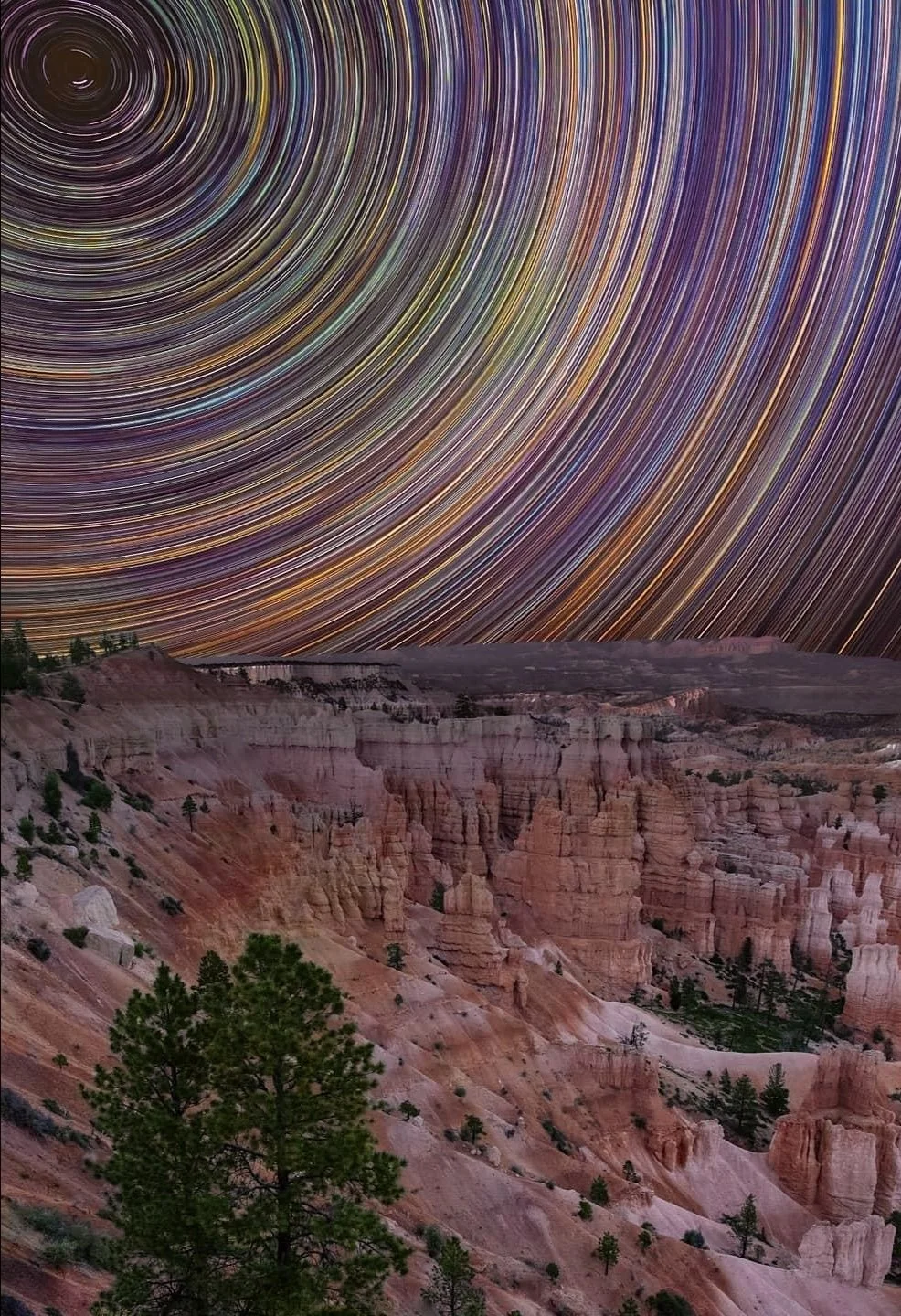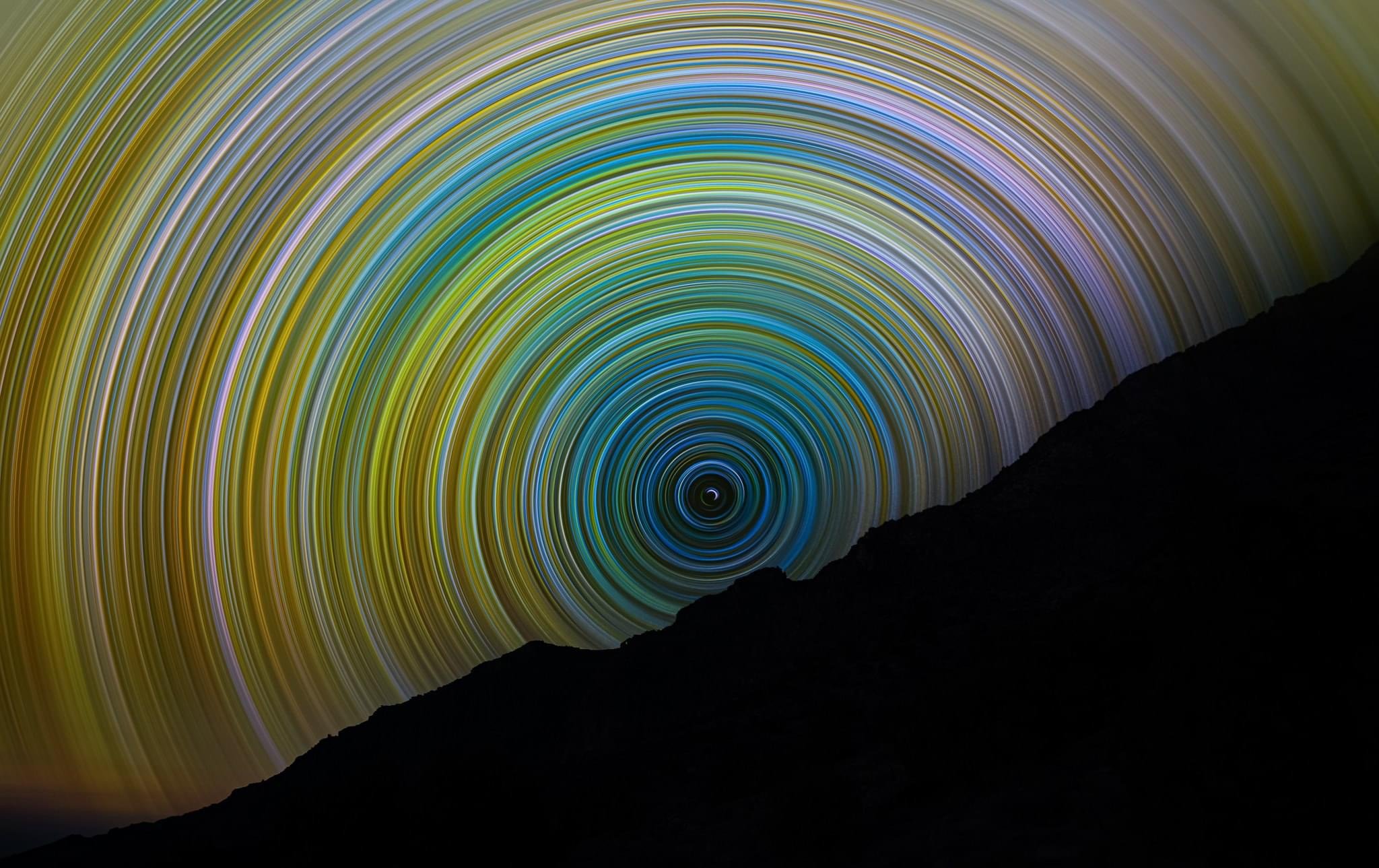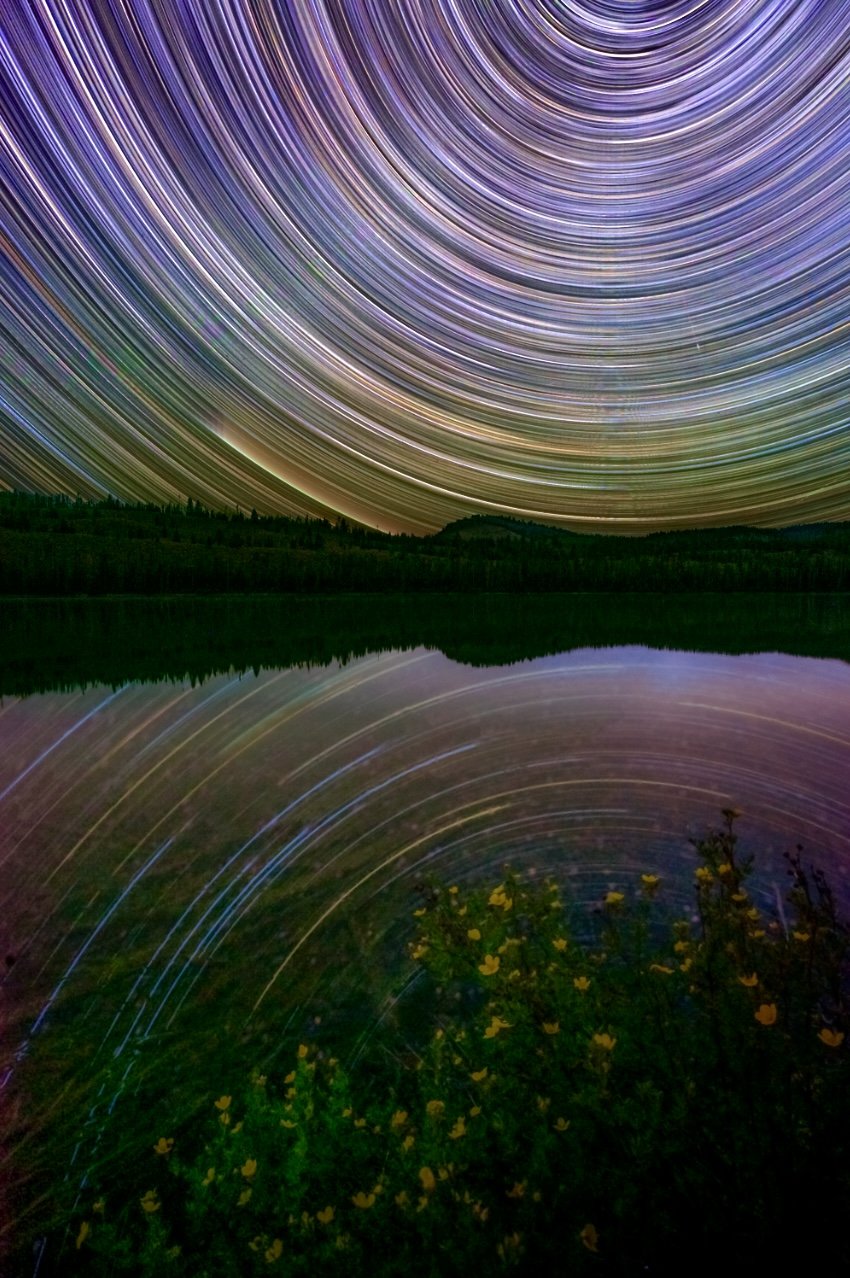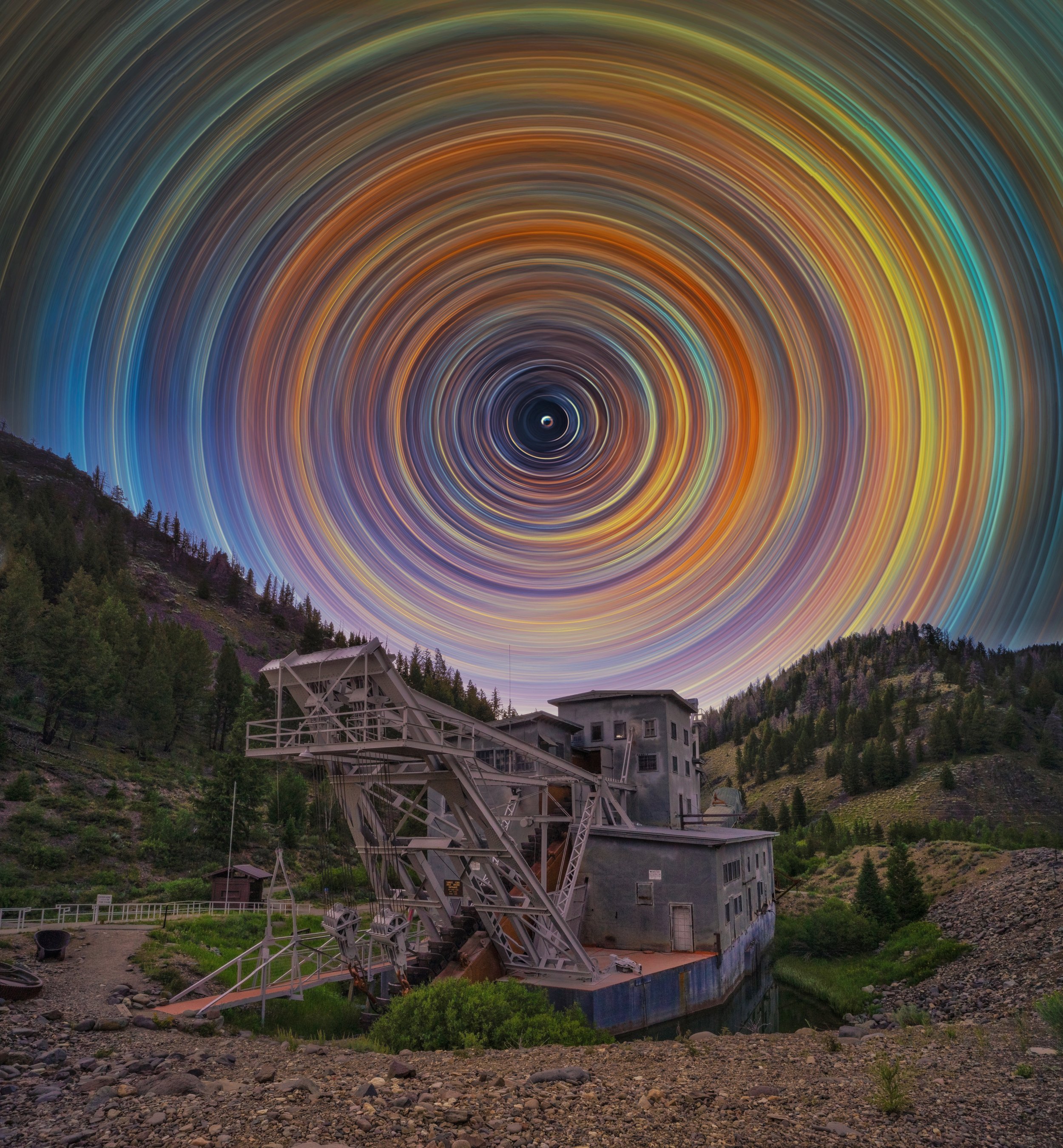
STARTRAILS
Bry: Startrails over Thors Hammer, Bryce Canyon, Utah
Bry: Startrails over the Temple of the Moon, Canyonlands, Utah
Bry: Startrails over Yankee Fork Dredge, Idaho
Bry: Moonlit Startrails over Yankee Fork cabins, Idaho
Bry: Bryce Canyon, Utah
Bry: Kanab, Utah
Bry: Zion Startrails
Bry: West desert, Utah
Bry: Old Faithful, Yellowstone National Park
Bry: Camping in Escalante
Bry: Stanley Lake Startrails
Bry: Bryce Canyon
Star trails are a simple and captivating technique in astrophotography, offering a unique way to visualize the apparent motion of the stars in the night sky due to Earth’s rotation. This technique involves long-exposure photography, where the camera’s shutter is left open for an extended period, allowing it to capture the path of stars as they move across the sky. Here’s a summary of key techniques and tips for capturing star trails:
Equipment: A digital camera with manual mode capability, a sturdy tripod, and a remote shutter release are essential to avoid camera shake during long exposures.
Location and Timing: Choose a dark location away from city lights to minimize light pollution. Clear nights with minimal moonlight are ideal for star trail photography.
Camera settings: Set your camera to manual mode. Use a wide-angle lens for broader sky coverage, set the focus to infinity (then try and focus on a star!), and experiment with aperture settings (usually between f/2.8 and f/5.6). ISO settings can vary but starting at 400 is a good baseline. Try to find out what your cameras invariance point is.
Exposure Time: There are two main approaches to capturing star trails: a single long exposure (which can be several minutes to several hours) or a series of shorter exposures (2-5 minutes each) that are later stacked using software to create the trail effect. The latter method reduces noise and allows for more control over the final image.
Post-Processing: Software like StarStaX or Adobe Photoshop can combine multiple images to create a single star trail photograph. This step is essential when taking multiple shorter exposures.
Experimentation ;) Play with different exposure times and compositions. Incorporating foreground elements like trees, mountains, or buildings can add depth and interest to your star trail images.
Battery and Memory: Long exposures and cold nights drain battery life quickly, so bring extras. High-capacity memory cards are also a must, as raw images take up a lot of space.
